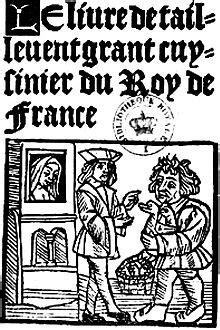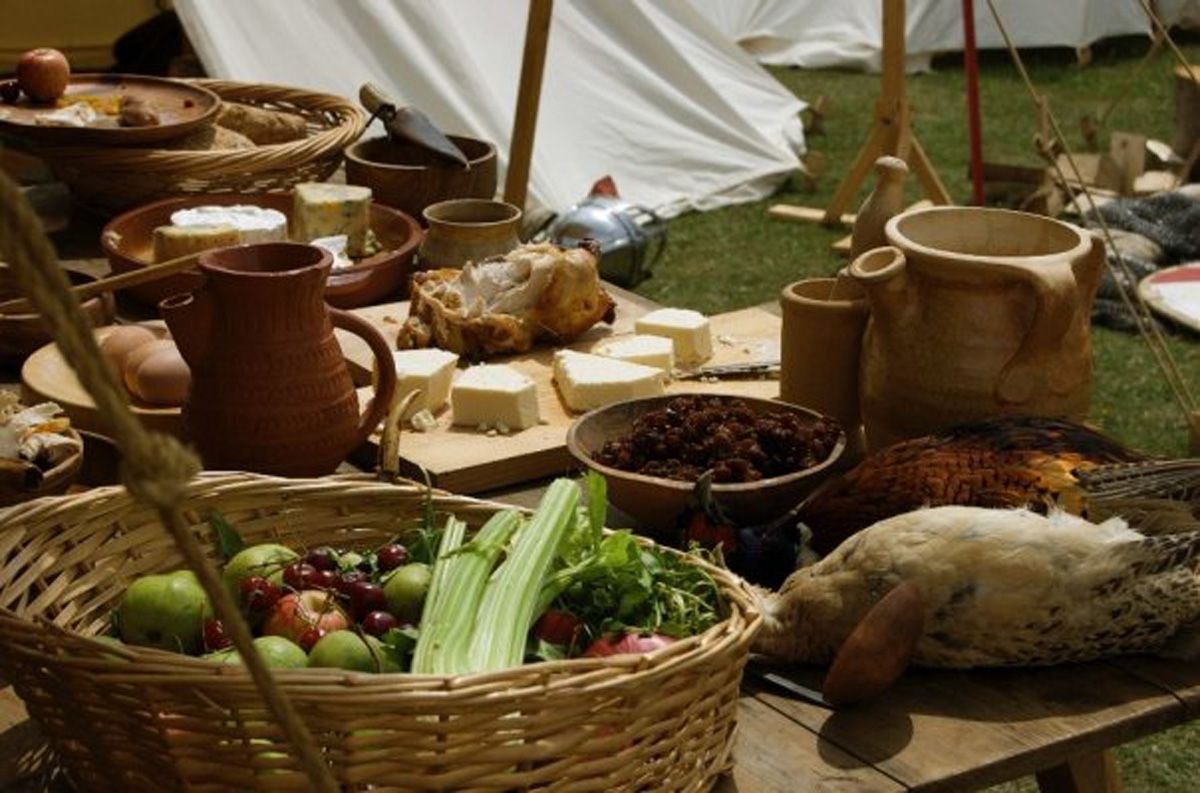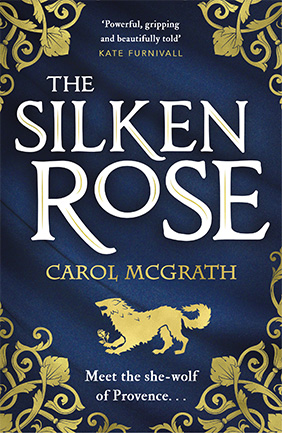Henry III, married to Eleanor of Provence, absolutely loved feasts and pageants. He enjoyed dressing extravagantly and she was a fashion icon during the mid thirteenth century.
Eleanor’s coronation feast was lavish. Henry, a man with a grand sense of occasion, was generous and warm-hearted. He spared no expense for his wedding to thirteen-year-old Eleanor and the coronation which followed six days later on 20th January 1236. At the feast there was unlimited quantities of venison, fish, and many delicacies. Wine was handed around freely in London. The citizens of Westminster saw to the presentation of the food providing the best chefs available. Nobles jostled for position as steward but Simon de Montfort who some decades later led a barons’ uprising against King Henry and his queen, won and acted as the King’s steward.
It was not until the fourteenth century we have evidence of medieval cookery manuscripts. These have been catalogued, studied and even recently published. A manuscript collection of recipes might take the form of a small scroll or a codex. It is very likely that recipes used a century later were followed during the previous century. La Viandier, 1300, a French codex, is a very old example. The oldest manuscript of this lies at the Bibliotheque national de France.

Menus today are made up of savory and sweet dishes served one after the other. It was different in medieval times. Great banquets such as that after Queen Eleanor’s coronation comprised of successive courses, each with a group of dishes placed simultaneously on the table. For each guest, realistically the choice was confined to those dishes they could reach. The menu was organised around roasted meats which were preceded by a few courses and followed by three or so further courses. The medievals believed the stomach resembled a stew pot in which the various foods were cooked once the mouth of the stomach was opened. Fresh seasonal fruits such as melon, grapes, cherries, strawberries along with salads dressed in oil and vinegar could open the stomach’s mouth and were served first. After this the stomach could receive dishes with sauces such as soups and pottage. These required a long cooking time!

Le Viandier
Roasted meats accompanied by various sauces followed. After these the entrements arrived on the tables. These were sweet and salted preparations and sampling them was accompanied by music and entertainments such as juggling, dancing, mock combats and acrobatic acts. It was an intermission during the feast. Food in masquerade might grace the table, such as pies containing live birds, poultry covered in golden feathers and other roasted birds with their plumage back on or replaced.

The Meats, cheeses and fruits so which was served when?
After the proper meal resumed dessert appeared. Sweet dishes were followed by cheese, candied fruits, light cakes served with hippocras which was a sweet spiced wine. They closed the stomach and activated the process of cooking. The epices de chambres, such as candied coriander seeds and ginger root which aided digestion and sweetened the breath, were passed around the company.

The Kitchen and medievals believed the stomach was like a cauldron
There were no forks. Guests did not necessarily have their own place-settings. Strangers often shared bowls, cups or glasses and trenchers. They were supposed to eat little, not grab food and not chose the best pieces. Christian ethics requested polite behaviour at the table. One washed one’s hands before eating meals always. A spoon, one per person, was provided and used to dip into a bowl shared with a neighbour. Meats were already cut up on the serving platters. Good manners demanded you offered the platter to your companion diner first. Morsels would be picked up with three fingers and lifted to the mouth. Most of the time, guests would not have napkins but if they did, these were placed over the shoulder. More frequently, they wiped fingers on the table cloth. To suck your fingers was extremely rude. You did not ever replace a half eaten piece of meat on the platter and you absolutely did not spit, nor could you blow your nose on the table cloth. Wine was watered and drunk in moderation at the table.

When might these have been served?
An Autumnal Menu for Fifteen Guests
First Course
Grenache or similar wine, fresh seasoned fruit
Second Course
Chicken with lemon, pumpkin soup, mushrooms with spices.
Third Course
Spit-roasted hare, black sauce, parsley studded lamb or mutton, pink garlic sauce
Fourth Course, The Entrement with entertainments
A blancmange, cheese fritters, chard and cheese pies,
Desserte
whole pear pie, custard tart,
Issue de Table
Hypocras, marzipan tart
Boute Hors
cardanom and ainse seeds
Recipe for Black Pepper Sauce
1 slice of bread, 1/3 cup of verjuice or equal parts cider vinegar and water, a tablespoon of wine vinegar, teaspoon of freshly ground black pepper, 1/4 teaspoon ground ginger, salt to taste.
toast the bread until dark. In a small non re-active pan, soak it in the verjuice and vinegar until completely fallen apart. Mash the bread with a fork and stir in the spices. Slowly bring to the boil and simmer until thickened. Add salt. If you want a smother sauce press through a strainer.
Serve with salmon.
Follow me on amazon Carol McGrath Author
Sign up to my newsletter for lots more recipes and other treats including a free story bit.ly/39eUgKl
You can find The Silken Rose here https://tinyurl.com/s98nq3t





